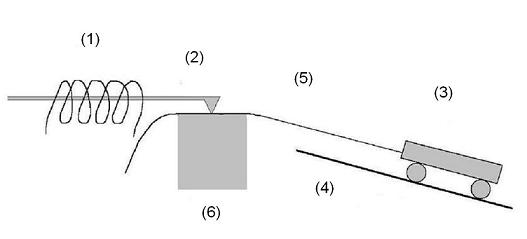Secondary Mechanics/Page1: Linear Motions
11st Physics Class: Mechanics
1. Chapter: Motion Teaching (kinematics)
Contents
Movements with a constant velocity
Problem 1.0: Philosophy of movements
The world is full of movement.
Something could be exaggerated claim: "Everything is on the move. (1)
Really? There is also much that is the antithesis says: "Nothing is moving." (2)
Find 2 each case for claiming (1) and (2)!
Physicists are not satisfied with a philosophical reflection, even though the former physics from the philosophy has developed.
They want to define and measure movement.
'Definition: Motion means moving an object in the course of time.
Explanation: we need two so-called dimensions to determine movement:'space and time. When a movement is changing the location of the object in space, while the time changes.
Because of this definition is the measurement of movements. Here is an example of the measurement capture a movement. Firstly, we deal with the simplest movement, 'straight-uniform' movement. Homogeneously means that the rate stays the same.
Experiment 1.1: pinstripes attempt.
(1) magnetic coil
(2) anchor ferromagnetischem metal
(3) test car
(4) Inclined plane
(5) Test Strips
(6) as a permanent-magnet edition
We are using a device which is in a position with a needle in regular interval to a swab test strips set. An electromagnet will be exchange voltage of 6 V. This causes the ferromagnetic anchor with a frequency of 50 Hz (Hertz) is reversed, and that fifty times in the second of the permanent-magnet, which serves as circulation, attracted. Scrolls of the test car with a constant speed down the incline, are reflected on the test strip 50 pinholes per second. (Note: The friction prevents the car on Schiefen level faster.)
Measured results: We will track as a series of points: track (A).
Then, the experiment again, but with a different speed lane (B).
Problem 1.1: Analysis
Evaluate the experiment 1.1!
Thinking about this:
- A) From which point does the motion with constant speed?
- B) How much time passes between two points when the needle with a frequency of 50 Hz on the strip dabs?
- C) Is the car in case (A) or (B) faster?
- D) What do we do best as a change of place, if possible, we want to achieve accurate results?
- E) Calculate the speed now in the case of (A) and (B)!


